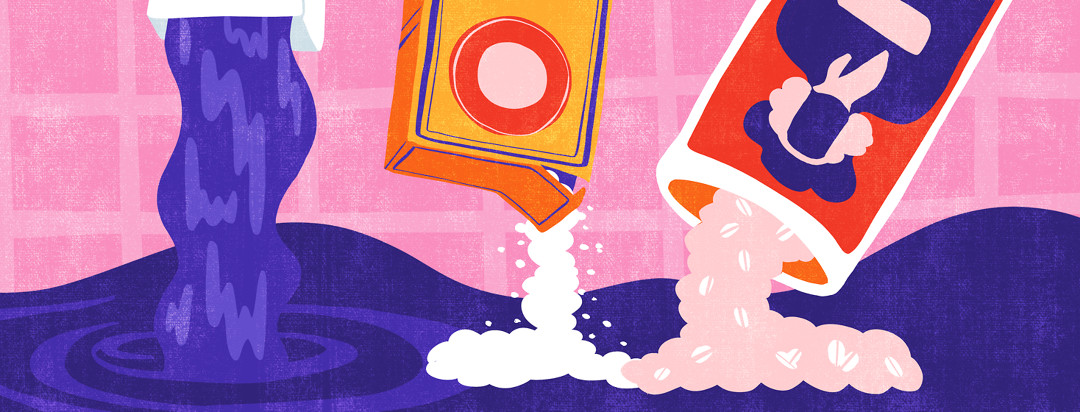Go-To Bathing and Showering Tips
The itching. The redness. The rashes. Eczema shows up in a few different ways, but for everyone who lives with eczema, there is one shared truth: Showering or taking a bath can be tricky, and many of you had to experiment quite a bit before finding out exactly what works for you.
To help those in the community who are still searching for what works for you, we reached out on the AtopicDermatitis.net Facebook page and asked for your best bathing and showering tips for people with eczema.
More than 60 of you offered your suggestions, and here’s what you said.
“I use cold water.”
Many people with eczema can’t tolerate hot water, especially when coming in from a cold environment, such as winter air or a room with AC. If you’re not sure if hot water is a trigger, try using warm or cold water and see if you experience more relief.
“My son has to shower in cold water. He usually takes 5 to 10 minutes to get cleaned up and out. He hates hot water because he says it burns his skin.”
“I use cold water.”
“I use a half cup of baking soda in the bath.”
Baking soda can be a great help in relieving the itch of eczema. Several of you use it in bathwater, and others use it as a scrub in the shower. Either way can be a great way to reduce itching.
“I use a half cup of baking soda in the bath. It helps to exfoliate and soothe inflamed skin.”
“I keep a little jar of baking soda in the shower and scrub with that. My skin comes out feeling amazing.”
“Oatmeal baths help.”
Oatmeal is a good treatment for eczema, soothing the skin, and strengthening the skin’s barrier. Several bath products include an ingredient called colloidal oatmeal, which is an oatmeal powder that is so fine that it will mix into the water rather than sink to the bottom. Some of you also have your own methods of how to take oatmeal baths. Whatever works for you is great!
“Oatmeal baths. Aveeno makes a good one. It helps to soothe skin.”
“I like Aveeno’s oatmeal therapy.”
“Just cook some oatmeal and put it in a knee-high stocking and tie it in a knot. Tie it around the tub faucet and let the water run over and through the oatmeal and then sit in the tub. Your skin will thank you for it!”
“Oatmeal baths help.”
“Goat milk soap is the only soap that gives me any relief.”
The good news and the bad news is that there is no one “right” soap to use for your eczema. You may need to try a few to see which one is right for you. The community had a lot of opinions on what works best. They recommended goat milk soap, African black soap, oil-based soaps, and any soap designed for sensitive skin.
“Goat milk soap is the only soap that gives me any relief. It really does work.”
“I also use African black soap, which helps with infection.”
“I like oil-based soaps/cleansers for sensitive skin.”
“I use Dr. Teal’s body washes. The Epsom salt helps exfoliate the dead eczema skin.”
“I love the Eucerin skin-soothing body wash. It’s oil-based.”
“Gently pat dry with white (no dye) towel.”
As much as how you bathe matters, so does what you do right after you step out of the shower or bath. Many of you stressed the importance of patting dry—and never rubbing the skin with a towel. Many of you also use lotion before drying off.
“Apply lotion BEFORE drying off.”
“Gently pat dry with white (no dye) towel.”
“I use a thick cream lotion, like Shea butter, immediately after getting out the bath or shower.”
We want to say thank you to the community for all your excellent suggestions. It’s our hope that all of your advice helps everyone find what works for them in a quick and painless process.

Join the conversation